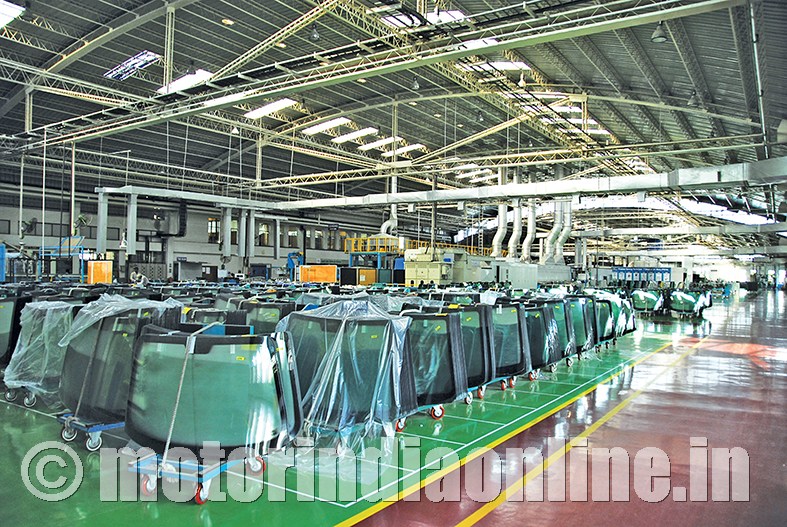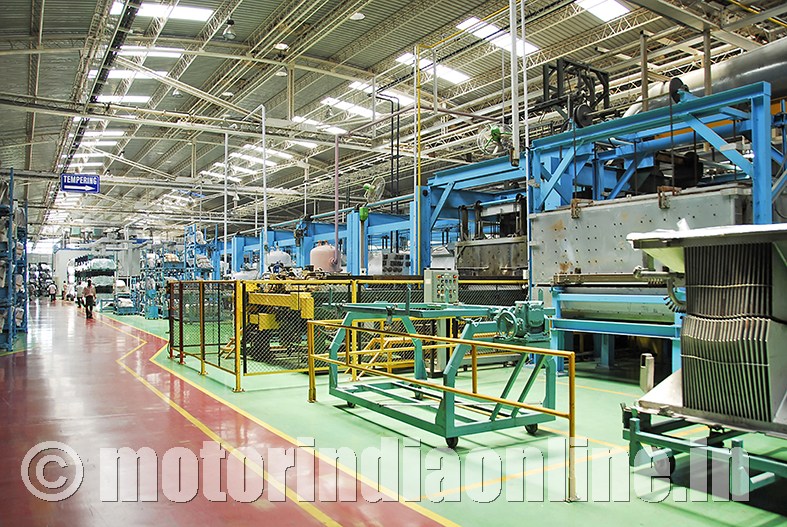Asahi India Glass (AIS) is a leading integrated glass solutions company having its dominant presence in the automotive glass segment, with an established track record of nearly three decades of operation. The company recently announced a major investment for setting up a new plant in Gujarat as part of its expansion plans and is confident of robust growth in the coming years.

In this exclusive interview, Mr. Amit Sood, Executive Director – Sales & Marketing, AIS, talks about the company’s growth strategy, its competition edge and its long-term plans in an exciting market place.
Excerpts:
Give us a brief background of AIS’ presence in the Indian market. Since when are you serving customers in India and how has the journey been so far?
Asahi India Glass Ltd. (AIS) was established as a tripartite joint venture between Maruti Suzuki, Asahi Glass and Labroo & Associates in 1985. It started with the prime objective of providing international quality automotive safety glass to the rapidly expanding automobile industry in India.
AIS has grown from a one-customer one-plant set-up to being one of the largest integrated glass companies in India, manufacturing a wide range of automotive safety glass, float glass, architectural processed glass and glass products spanning across the entire glass value chain.
Where do you make your products and what kind of capacities and facilities do you have? India being a geographically vast country, are you placed strategically close to your key customers for faster delivery and also to reduce the possibility of damage during transport?
Over the years, AIS Auto Glass has expanded from a single location manufacturing company into one with multiple production and assembling facilities across different regions of India. Today we have four state-of-the-art production facilities at Bawal (Haryana), Roorkee (Uttarakhand), Chennai (Tamil Nadu) and Taloja (Maharashtra).
AIS offers unmatched location flexibility to its customers with multiple plants spread across the country which run at optimum capacity and have the capability to produce products as per customer requirements.
This will be further bolstered with the addition of a new greenfield facility in Gujarat with the capability to produce the entire auto glass range.
With warehouse-cum-sub-assembly units in Gujarat, Pune and Bangalore, supported by a stocking facility in Gurgaon, AIS mitigates any disruption in the supply chain by being close to customers, with each warehouse maintaining adequate inventory to manage any contingency.
Given the sensitive nature of glass, how secure are you on the logistics front? Do you work with specialized logistics service providers to ensure minimal damage to your products? Name them, if possible.
We are using a dedicated fleet for delivery of our glasses to customers. The trucks are specially designed and we are using specialised packaging with rubber cushions to prevent transit damage. Also we use vibration pad on the floor of the truck. All our vehicles are equipped with GPS for real-time tracking information.
Yes, we work with multiple specialized service providers.
How much do different segments – passenger cars, commercial vehicles (light, medium, heavy), construction equipment and others – contribute to your overall business? Please share figures in terms of volume and revenue, if possible. What kind of market share do you have in these segments?
AIS Share of Business: (16-17), pcs- Passenger Car – 77.1 %
Commercial Vehicle (MHCV + LCV + Three wheelers) – 20.7%
Do correct me if I am wrong. Glass is probably a product segment where there is quite a bit of challenge from unorganized players who operate from a totally different environment across the value chain – production, sales, logistics, etc. Are these players still a major threat? Whether yes or no, please substantiate and give us a perspective of the competitive nature in the market today.
In the case of OEMs, the unorganized players have no influence. In the case of the aftermarket, inferior quality products at cheaper price from unorganized players pose a threat, but with increased consumer awareness on safety and quality, AIS products are well accepted in the aftermarket.
In terms of product development, R&D and innovative technology, where does AIS stand? Could you share some references in the form of some ground-breaking development or industry-first technology you have come up with to solve customers’ problems?
AIS is the most trusted supplier to the leading original equipment manufacturers (OEMs) – in the passenger car, commercial vehicle (trucks and buses), railways, metro coaches and off-highway segments. The widest range of glass products available in the automotive sector in India today is from AIS and includes not just laminated windshields and tempered glass for sidelites and backlites but also a host of sub-assembly and value-added products like defogger glass, acoustic glass, encapsulated glass, etc., and innovative products like plug-in windows, water-repellant glass and rain-sensor windscreen, to name a few.
AIS is extensively involved with some of our strategic customers from the initial design stages and also cohesively work with the OEMs for any changes required in the design during the development stage. We are also constantly discussing with our collaborators, Asahi Glass Company of Japan, for introducing new value-added technologies and making process and technology in-house.
All AIS production facilities have the requisite product and homologation approval as per customer requirements. When it comes to tooling and new product development, AIS is well placed to support its customers with its state-of-the-art in-house tooling development and 4 tool-rooms across India, with the lead time for development of new glass products, including testing, being as low as 50 days.
How strong is AIS in the OEM and non-OEM space (bus body builders, aftermarket, etc.)? What are your plans to expand your presence further in both these spaces?
AIS has a dominant presence across OEMs and vehicle segments as evident from our market share. We have been successful in retaining our leadership position in the OEM segment due to the continuous support and trust of our customers and backed by the exceptional QCDDM performance. AIS has a dominant share in the aftermarket (>40%) despite the presence of multiple players in this segment and imports from China. AIS caters to practically all OEM bus makers and a few well established and recognized bus body builders. As far as addressing the needs of the unregulated market is concerned it is expected that, with the implementation of the new CMVR norms, the focus should be there on the quality and safety of consumer which will help us in proposing our high quality and value added solutions to this segment.
What are AIS’ medium to long-term plans for growth? Could you share your vision and the key targets set to be achieved by 2020?
We are confident that the Indian economy will continue its growth momentum and, therefore, there will be opportunities for AIS. The auto industry is highly upbeat with renewed consumer confidence and the slew of new high quality product launches. However, this growth will be skewed towards a few winners and will involve high levels of volatility and complexity. Such an environment suits AIS well due to our extreme customer sensitivity and our readiness to equip ourselves for such positive ambiguity.

